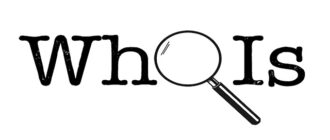What is HttpStatus code?
An HTTP status code is a server response to a browser’s request. When you visit a website, your browser sends a request to the site’s server, and the server then responds to the browser’s request with a three-digit code: the HTTP status code.
HTTP Status Codes Glossary
This list is an easy-to-reference database of HTTP status codes.
1×× Informational
The 1xx (Informational) class of status code indicates an interim response for communicating connection status or request progress prior to completing the requested action and sending a final response.
- 100 Continue
- 101 Switching Protocols
- 102 Processing
2×× Success
The 2xx (Successful) class of status code indicates that the client’s request was successfully received, understood, and accepted.
200 OK
The 200 (OK) status code indicates that the request has succeeded. The payload sent in a 200 response depends on the request method.
201 Created
The 201 (Created) status code indicates that the request has been fulfilled and has resulted in one or more new resources being created.
204 No Content
The 204 (No Content) status code indicates that the server has successfully fulfilled the request and that there is no additional content to send in the response payload body.
- 202 – Accepted
- 203 – Non-authoritative Information
- 205 – Reset Content
- 206 – Partial Content
- 207 – Multi-Status
- 208 – Already Reported
- 226 – IM Used
3×× Redirection
The 3xx (Redirection) class of status code indicates that further action needs to be taken by the user agent in order to fulfill the request.
301 Moved Permanently
The 301 (Moved Permanently) status code indicates that the target resource has been assigned a new permanent URI and any future references to this resource ought to use one of the enclosed URIs.
302 Found
The 302 (Found) status code indicates that the target resource resides temporarily under a different URI.
- 304 – Not Modified
- 300 – Multiple Choices
- 303 – See Other
- 305 – Use Proxy
- 307 – Temporary Redirect
- 308 – Permanent Redirect
4×× Client Error
The 4xx (Client Error) class of status code indicates that the client seems to have erred.
400 Bad Request
The 400 (Bad Request) status code indicates that the server cannot or will not process the request due to something that is perceived to be a client error (e.g., malformed request syntax).
401 Unauthorized
The 401 (Unauthorized) status code indicates that the request has not been applied because it lacks valid authentication credentials for the target resource.
403 Forbidden
The 403 (Forbidden) status code indicates that the server understood the request but refuses to authorize it.
404 Not Found
The 404 (Not Found) status code indicates that the origin server did not find a current representation for the target resource or is not willing to disclose that one exists.
405 Method Not Allowed
The 405 (Method Not Allowed) status code indicates that the method received in the request-line is known by the origin server but not supported by the target resource.
415 Unsupported Media Type
The 415 (Unsupported Media Type) status code indicates that the origin server is refusing to service the request because the payload is in a format not supported by this method on the target resource. The format problem might be due to the request’s indicated Content-Type or Content-Encoding, or as a result of inspecting the data directly.
- 402 Payment Required
- 406 Not Acceptable
- 407 Proxy Authentication Required
- 408 Request Timeout
- 409 Conflict
- 410 Gone
- 411 Length Required
- 412 Precondition Failed
- 413 Payload Too Large
- 414 Request-URI Too Long
- 416 Requested Range Not Satisfiable
- 417 Expectation Failed
- 418 I’m a teapot
- 421 Misdirected Request
- 422 Unprocessable Entity
- 423 Locked
- 424 Failed Dependency
- 426 Upgrade Required
- 428 Precondition Required
- 429 Too Many Requests
- 431 Request Header Fields Too Large
- 444 Connection Closed Without Response
- 451 Unavailable For Legal Reasons
- 499 Client Closed Request
5×× Server Error
The 5xx (Server Error) class of status code indicates that the server is aware that it has erred or is incapable of performing the requested method.
500 Internal Server Error
The 500 (Internal Server Error) status code indicates that the server encountered an unexpected condition that prevented it from fulfilling the request.
502 Bad Gateway
The 502 (Bad Gateway) status code indicates that the server while acting as a gateway or proxy, received an invalid response from an inbound server it accessed while attempting to fulfill the request.
503 Service Unavailable
The 503 (Service Unavailable) status code indicates that the server is currently unable to handle the request due to a temporary overload or scheduled maintenance, which will likely be alleviated after some delay.
504 Gateway Timeout
The 504 (Gateway Timeout) status code indicates that the server while acting as a gateway or proxy, did not receive a timely response from an upstream server it needed to access in order to complete the request.
- 501 Not Implemented
- 505 HTTP Version Not Supported
- 506 Variant Also Negotiates
- 507 Insufficient Storage
- 508 Loop Detected
- 510 Not Extended
- 511 Network Authentication Required
- 599 Network Connect Timeout Error
Reference:




